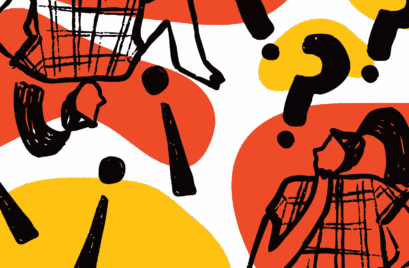
“Data storytelling represents an exciting, new field of expertise where art and science truly converge.” – Brent Dykes
We live in a data-abundant world. In organisations, we are gathering more data than ever from an immense range of sources. Most of our systems and technological services are awash with reporting capabilities and data extraction tools. We’ve got the insights. The big question is: how do we communicate this to others in a way that inspires action?
That is where data storytelling comes in.
The ability to effectively tell stories with data is a key focus across almost every industry at the moment and a highly sought-after skill. Glass Door ranked the role of data scientist as the second best job in the United States of America for 2021.
We want to leverage our data to encourage change and in order to do this we need to be persuasive. Increasing, it is clear that storytelling is the perfect tool to achieve this. Storytelling supports conveying of information and motivating behaviour across a number of axes including the audience’s capacity to retain the information, the engagement of emotions and high-level comprehension. Research shows that storytelling is highly persuasive.
One of the great aspects of stories is that they are a PULL strategy for persuasion. When we tell people what they need to know and do, we PUSH it on them, and this can lead to resistance and switching into threat mode. Pull strategies draw people in of their own accord.
So, where do we start when it comes to storytelling with data?
Data Literacy Comes First
The first step in storytelling with data is understanding data. This means finding the story that you want to tell amongst the data reservoirs you have access to. If you are able to pick out the themes, insights and directions in the data, you can then begin designing your strategy to communicate them.
There are multiple types of data:
- Descriptive data – What has happened?
- Diagnostic data – Why has it happened?
- Predictive data – What is likely to happen?
- Prescriptive data –What action should we take next?
Once you understand the type of data you are working with, you are better able to craft a suitable story. For example, predictive data is future focussed and this should be reflected in the story such as through the imagining of a future world.
Strong data storytelling will be able to follow the curve of the data as it changes over time and interacts with other broader influences. An important part of this is understanding your organisational context well so you can meaningfully adapt your findings to the environment.
There are a number of different interactions which can be established in the data including relationships, intersections, comparisons, clusters, or anomalies. These again will link back into the storytelling devices that you decide to use.
Once we’ve assessed our data, we are ready to construct a story.
Same Tools, Different Materials
Just as with storytelling more broadly, we must integrate our data into a well-designed story. This means key characteristics such as:
- Having a narrative structure with a distinctive beginning, middle and end
- Developing characters and events through use of descriptive terms
- Engaging with the emotions and desires of the audience
However, this narrative structure is populated by data and insights rather than, say, a fictional romance (or maybe both!). In this process, understanding your audience is key. Some people, for example in the tech space, love data and want to see it in all its amassed glory. Others find data overwhelming and unnecessary unless immediately tied to its impact on them. The amount in which you foreground the data in favour of the narrative will be determined by your audience. Think about how you can tailor your approach to connect with and influence those you are engaging.
Data Visualisation
One significant part of data storytelling is data visualisation. Data visualisation is about findings ways of representing data through images, graphs or designs which is easily understandable and sets up the audience to focus on the key messages you are seeking to convey.
There are three key tips we need to be thinking about in the data visualisation space:
- Represent for meaning – Ensure you choose a method of representing the data which zeroes in on the actual meaning you are seeking to emphasise. For example, when comparing the data for two separate periods, ensure these periods are represented side by side to allow an easy contrast.
- Direct attention – We are only able to absorb information which we are attending to. Use annotations or representations to direct the audience’s attention to regions or aspects of the data which are high in importance.
- Minimise cognitive load – Due to the sheer volume of information we encounter every day, presentation of data in a manner which appears on the face of it as complex, overly-noisy or poorly proportioned, is an immediate drain on our intellectual resources. Remove all unnecessary information and imagery.
Where you are accompanying your data storytelling with visual aids, we need to be mindful in our approach to their representation and connection to our broader storyline.
Storytelling might not always be appropriate for every case of communication. However, if your message is high value but potentially disruptive or unexpected, then telling a story can support by putting it into context and engaging listeners on a higher level. And, if you are able to incorporate data into your story in a manner which is persuasive and interesting, you will be leveraging insights in no time.
Need More Help?
Keen to find out more about how your organisation can embrace data storytelling? Performance Frontiers run innovative workshops that reveal how leaders can use data to create memorable, engaging narratives that will influence decisions and drive change. Speak to Gretel today about how we can partner with you and your organisation to translate data into human action and organisational change – telling the stories behind the spreadsheets and conveying context to understand, reason to care, and motivation to act.








